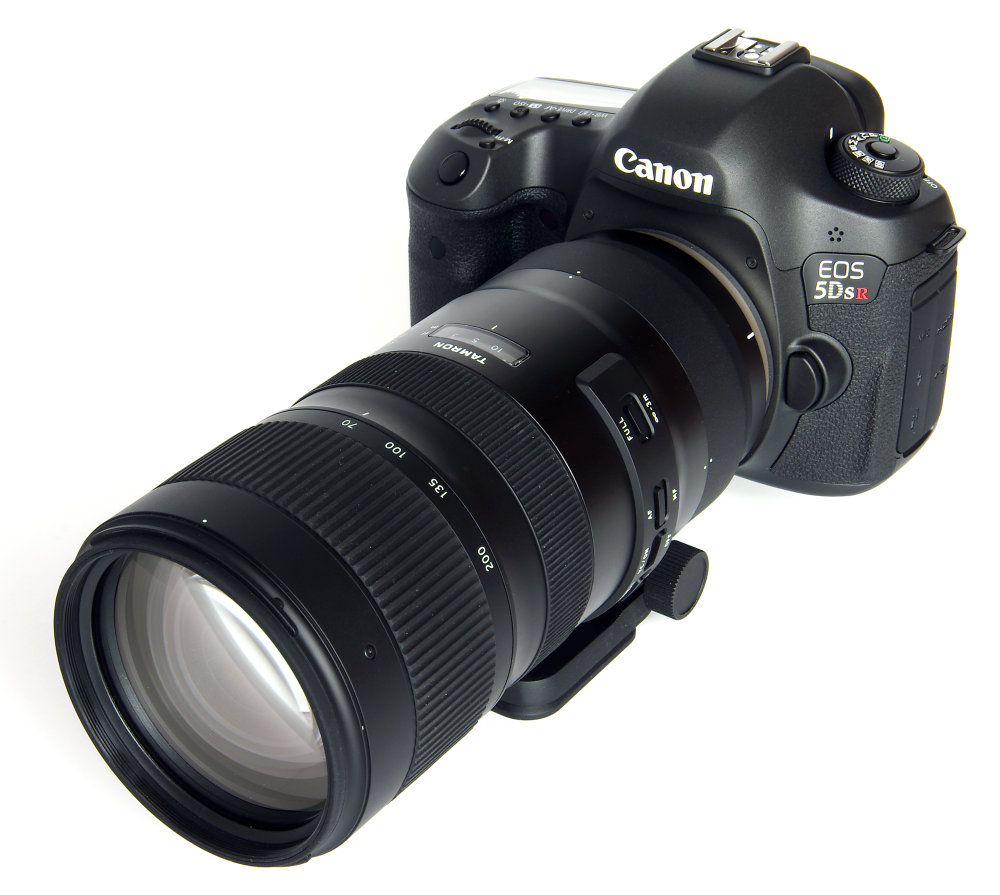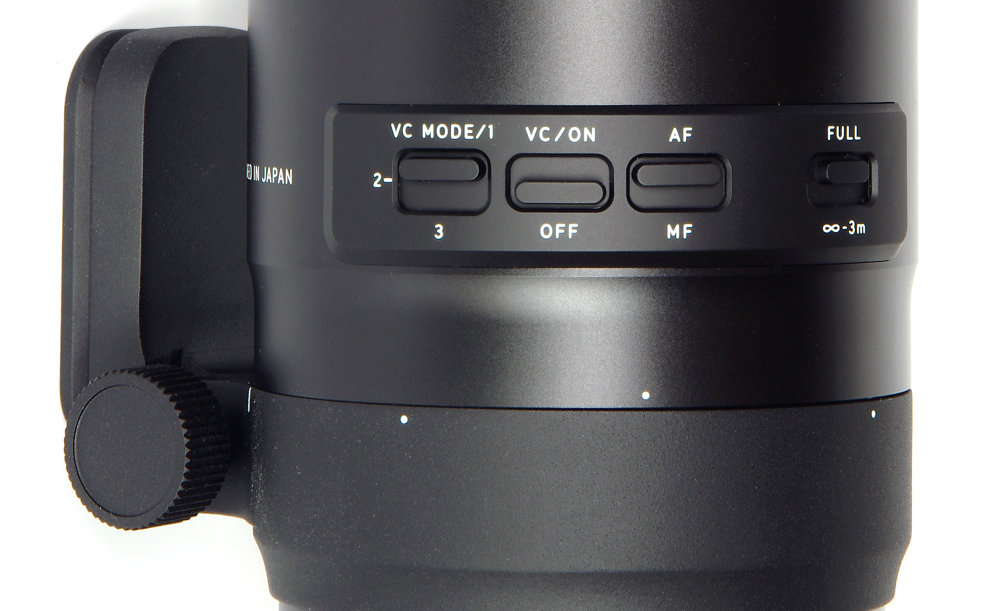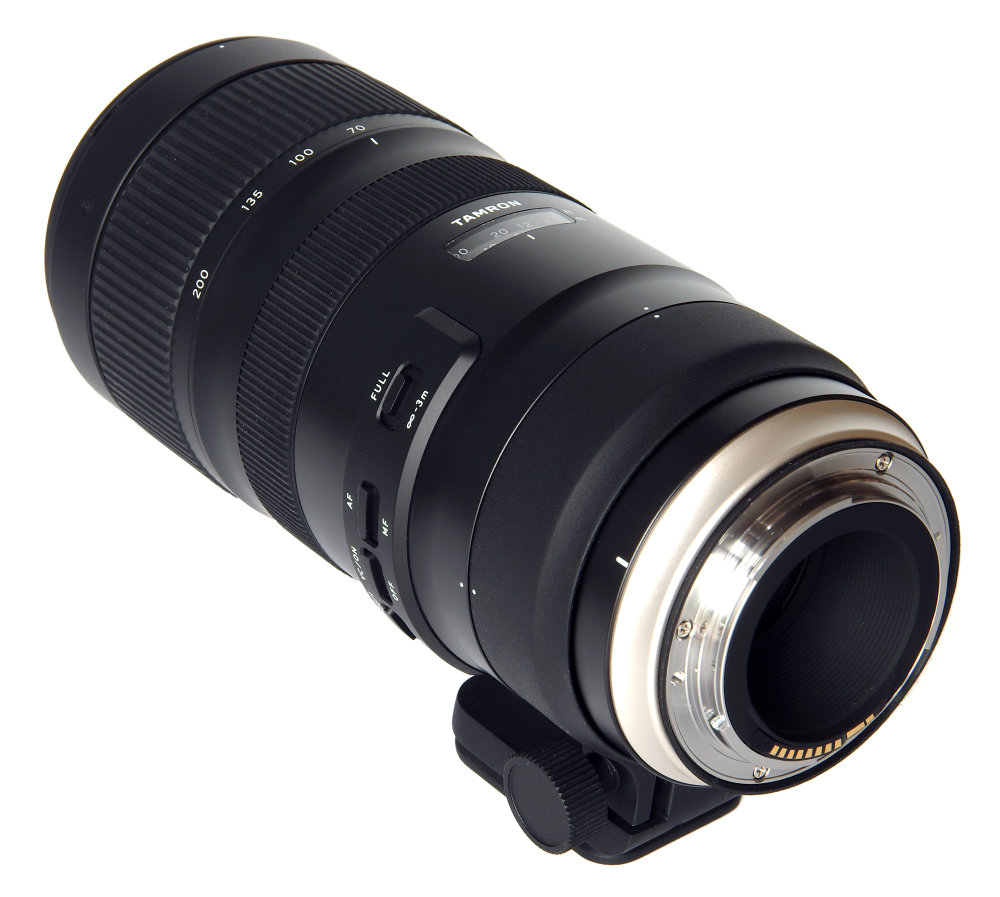Tamron SP 70-200mm f/2.8 Di VC USD G2 Review
Tamron SP 70-200mm f/2.8 Di VC USD G2 Handling and Features
Starting at the front of this substantial lens, which weighs in at a hefty 1500g (1485g for the Nikon version), we find a generously sized petal lens hood that bayonets cleanly and crisply onto the lens. Its click stop is sufficient to hold the hood firmly in place, but not excessively tight. There is a 77mm filter thread.
The zoom ring lies behind this, reasonably wide and although smooth in operation it does not have any silkiness in its feel. The lens does not extend on zooming, nor does it do so on focusing. The focusing ring is smaller than the zoom ring and again operates smoothly but without a silky feel to it. The focusing scale is housed under a protective clear plastic window, with indications in feet and metres. The lens focuses down to 0.95m (37.4 inches), offering a maximum magnification of 0.16x, or 1:6.1. Manual focusing tweaks can be applied at any time during AF operation.
Closer again to the camera body are located a series of switches. The AF range can be selected between Full and between infinity and 3m, useful perhaps when shooting more distant subjects to prevent any possibility of the lens hunting through its full range. The AF/MF switch and VC (Vibration Compensation) on/off switch are both self-explanatory. There are three VC modes selectable via the last of the switches. Mode 1 is standard and stabilises the compensation of lens and viewfinder image equally. Mode 2 is for panning shots. Mode 3 is similar to Mode 1 but prioritises stabilising the lens over stabilising the viewfinder image, offering therefore an improvement in the speed of the process. A 5 stop advantage is quoted for the VC system.
The usual tripod mount collar is well made and looks well up to the job. The lens can be rotated into portrait mode or any other point by loosening the screw provided. This is a tremendous convenience for switching between landscape and portrait orientated shots when the lens is tripod mounted.
Lens construction is a complex 23 elements in 17 groups, with a 9 bladed diaphragm and e Band and Fluorine coatings. There are both LD (Low dispersion) and XLD (Extra Low Dispersion) lens elements. The lens is also moisture and dust resistant, an indispensable feature for use in challenging outdoor shooting. The diaphragm is an ultra-smooth electromagnetic design, now on both Nikon and Canon variants of the lens.
Although quite a heavy combination with the Canon EOS 5DS R body, in practice this does not seem too much of a burden. The package balances well and operates efficiently. Although it depends on the individual photographer and their grip, it is possible to nudge the manual focus ring or even one of the switches as the hand has to reach over them to gain access to the zoom ring.
Lens compatibility with various Tamron accessories enables use with the Tele-converters TC-X14 (1.4x) and TC-X20 (2x), which will extend the focal length range of the lens. There is also compatibility with Tamron's TAP-in console, a decvice that makes a USB connection to a PC. Updating of lens firmware and some lens adjustments can be made easier in this way.
Notwithstanding very minor handling issues, the lens is very pleasing to use, focuses swiftly and is an efficient photographic tool.
Add your message
Please login here or if you've not registered, you can register here. Registering is safe, quick and free.
photodo Stats
428 MTF tests
74 in-depth photodo reviews
100+ users join each day
Help the lens community by reviewing or rating a lens today via our lens search
Latest Lens Reviews
- Chinon 28mm f/2.8 Vintage Lens Review
- Canon EF 70-200mm f/4L IS II USM Lens Review
- Samyang AF 85mm f/1.4 EF Review
- Sigma 70mm f/2.8 DG Macro Art Review
- Samyang AF 24mm f/2.8 FE Review
- Meike 50mm f/1.7 Review
- Tamron 70-210mm f/4 Di VC USD Review
- Lensbaby Burnside 35mm f/2.8 Review
- Asahi Super Takumar 50mm f/1.4 Review
- Asahi Super-Multi-Coated Takumar 135mm f/3.5 Review



